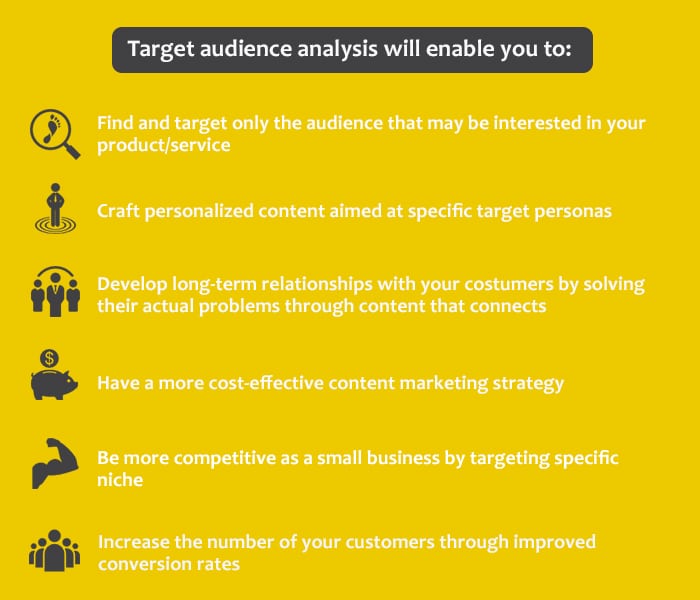It’s reported that almost half of all marketers fail to get their content seen by their target audience. While there can be many different reasons for this, perhaps one of the most common is that organizations aren’t able to create relevant content for that audience—because they aren’t really sure who their target audience is.
This is why target audience analysis is so important. It is a method which can help businesses make sure that their content is seen by the right people, at the right time, ensuring marketers are getting the most value from their campaigns.
Benefits of target audience analysis
Target audience analysis is essentially the insight that many businesses need in order to successfully streamline their marketing processes to derive maximum value from a campaign. By customizing content to a specific group who have statistically been shown to be the most likely to convert, organizations can save time, money, and internal resources by choosing to omit certain demographics who aren’t deemed to be as valuable.
From a future campaign perspective, any insight that is gained now can be utilized to ensure that new campaigns are launch-ready, with less of a need for post-launch tweaks. However, the benefits don’t stop at content marketing. In fact, audience analysis is beneficial in many more ways.
By knowing exactly who the target audience is, and what it is they’re looking for, businesses can strategically develop new products and services to solve common problems amongst these groups and meet the demand of these demographics. Additionally, these new products and services can be priced accordingly to appeal to the groups, such as low-cost options for college students, for example.
Ultimately, audience analysis can help with everything from marketing to strategic-level decision making.
Challenges for content marketers
Despite the numerous benefits, target audience analysis certainly has its challenges. These challenges can be broken down into two distinct categories—creating content and marketing that content:
Creating content for a target audience
- Understanding the available products and/or services to a well enough extent to successfully create content that will prove relevant to a niche corner of the audience.
- Finding the right balance between visits and conversions. By marketing to a select audience, page visits are likely to be lower but should equate to more conversions.
- Working to discover who the target audience really is; asking important questions without deterring any prospective customers from the brand or organization.
Marketing content to a target audience
- Discovering the most effective and efficient marketing channels (eg. social media platforms, online directories) to display the content to all demographics in the group.
- Understanding a product and/or services to a well enough extent to be able to see how these products/services relate to different demographics, and to varying interests.
- Marketing specifically to the target audience while also successfully capturing any omitted demographics/groups who have found their way to a product website.
There is a very fine line here. It is important for marketers to strive to create niche content that is specifically tailored to the agreed target audience while attempting not to deter the wider audience.
Balancing the good and the bad
Fortunately, there are many ways that marketers can continue to reap the benefits of target audience analysis while simultaneously minimizing the effects of some of the most common challenges.
In terms of the initial creation of the target audience from the broader audience group, the challenges can be reduced by producing a customer profile that takes into account demographics (age, location, gender etc.) and psychographic criteria (interests, values, behavior etc.), as well as looking at similar attributes and characteristics shared by these people to create a larger pool of high value visitors. It is vital to determine a cut-off point, however, so that content can remain focused, relevant, and niche.
In terms of content creation and marketing to a select audience, it’s important to exactly what the target audience wants. If you don’t know: ask! Surveys, interviews, and focus groups can all be beneficial. Additionally, it never hurts to take a look at the methods used by competitors or to try out the product and/or service directly to get a better feel for it.
It’s a lot of work that will eventually pay off
Even before reading this overview, you probably knew how much value there is in a proper target audience research. However, many still like to avoid some steps and cut some corners because they don’t know how to overcome challenges that are blocking their way.
If you are interested in a full report that covers this area in more depth, I suggest you read our Complete Guide To Target Audience Analysis.








